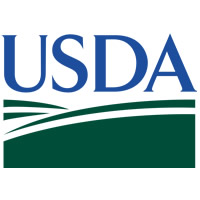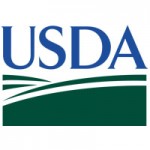The changes FSIS is announcing fall into three categories: enhancing its science-based approach to mitigate foodborne pathogens, with a key focus on Listeria monocytogenes; improving training and tools for its inspection workforce; and evolving its oversight of regulated facilities, with an emphasis on data review and state inspection agreements. FSIS will initiate the following changes in the next 30 days:
Enhancing FSIS’ Regulatory and Sampling Approach to Listeria
- Effective January 2025, FSIS will add broader Listeria species testing to all samples of ready-to-eat product, environmental and food contact surfaces. FSIS laboratories currently test these samples for Listeria monocytogenes, which is the specific type of Listeria species that causes illness. However, adding additional species testing to the agency’s regulatory framework will help provide more information about the effectiveness of a facility’s sanitation program and can signal to FSIS if follow up is needed (for example, a Food Safety Assessment, intensified sampling, or enforcement actions).
- FSIS will leverage the expertise of its National Advisory Committee on Microbiological Criteria for Foods (NACMCF). NACMCF is a federal advisory committee that provides scientific advice and recommendations to USDA and other government agencies on microbiological and public health issues. In December, FSIS will begin recruitment for new committee members, who will be given the specific charge of reviewing the agency’s regulatory approach to Listeria monocytogenes. Expertise in Listeria will be sought for membership. The committee’s input will be used to guide more long-term policy changes.
Equipping FSIS Inspectors with Updated Training and Tools to Recognize and Respond to Systemic Food Safety Issues
- FSIS will update its instructions and training for food safety inspectors to better equip the workforce to recognize and highlight systemic problems in a standardized way. Agency inspectors will receive updated instructions and training, and FSIS field supervisors will routinely review these instructions with inspectors to ensure full understanding and appropriate application. Inspectors will also receive supplemental Listeria monocytogenes control training designed to help strengthen inspectors’ understanding of the regulatory requirements in FSIS’ Listeria Rule and how to verify establishments have designed and implemented food safety systems that comply with those requirements.
- FSIS will conduct Food Safety Assessments (in-depth food safety reviews) at ready-to-eat meat and poultry facilities. In FY 2025, FSIS is prioritizing completion of Food Safety Assessments at ready-to-eat meat and poultry facilities that rely exclusively on sanitation measures to control for Listeria. These reviews will provide information about the plants individually and collectively and could inform future policy or process changes to target this microorganism.
- FSIS field supervisors will conduct in-person, follow-up visits when systemic issues are identified during a Food Safety Assessment. Follow-up visits by FSIS field supervisors will bolster oversight from more senior inspection staff to ensure a facility fully addresses issues identified during a Food Safety Assessment and could inform enforcement action by FSIS. Field supervisors will work with inspectors to ensure the facility stays in compliance.
Tightening Oversight of Regulated Establishments, Including Those Under State Inspection Models
- FSIS inspectors will verify specific Listeria monocytogenes-related risk factors at ready-to-eat facilities weekly. These risk factors include changes in physical plant modifications, such as new construction; indicators of sanitation problems, such as condensation, roof leaks, damaged equipment, or cracked floors; and Listeria species or Listeria monocytogenes positive test results from company testing. FSIS district offices, agency field supervisors and inspectors will review, analyze and consider the weekly data from each facility to determine if there are systemic issues that warrant further action, such as a Food Safety Assessment, intensified sampling, or enforcement steps.
- FSIS will clarify state and Federal requirements for consistent oversight of Talmadge-Aiken (TA) programs through updated cooperative agreements and instructions. Through updated cooperative agreements with each participating state, FSIS will set specific requirements, including clear expectations for oversight, enforcing federal food safety laws, comprehensive federal training for TA inspectors, and enhanced regular coordination with FSIS. FSIS will also designate field and headquarters positions assigned to TA oversight; will clarify training requirements and criteria to start, maintain and terminate state inspection coverage of an establishment.
- FSIS will revise establishment-review alert triggers. One significant criterion used to guide a district office’s decision to conduct a Public Health Risk Evaluation (PHRE), which typically precedes a Food Safety Assessment, is a monthly list of facilities with higher rates of noncompliance related to public health that is generated using an algorithm. Using additional data from the new weekly verification of Listeria monocytogenes-related risk factors, FSIS intends to update its algorithm and triggers to better identify high-risk facilities.
According to a USDA press release, these actions are intended to strengthen FSIS’ inspection and oversight by enhancing its ability to proactively identify and respond to the types of systemic problems that could lead to outbreaks. Listeria monocytogenes is a pathogen of particular concern because it can be especially harmful to people with compromised immune systems, like the elderly and pregnant women, and it can contaminate foods that are not cooked before consumption.
FSIS is continuing to identify other steps that would improve control of Listeria monocytogenes, dependent on funding availability. As requested in the FY 2025 President’s Budget, additional resources are necessary for the agency to continue to meet its mission to keep meat, poultry, and egg products safe and wholesome.
















